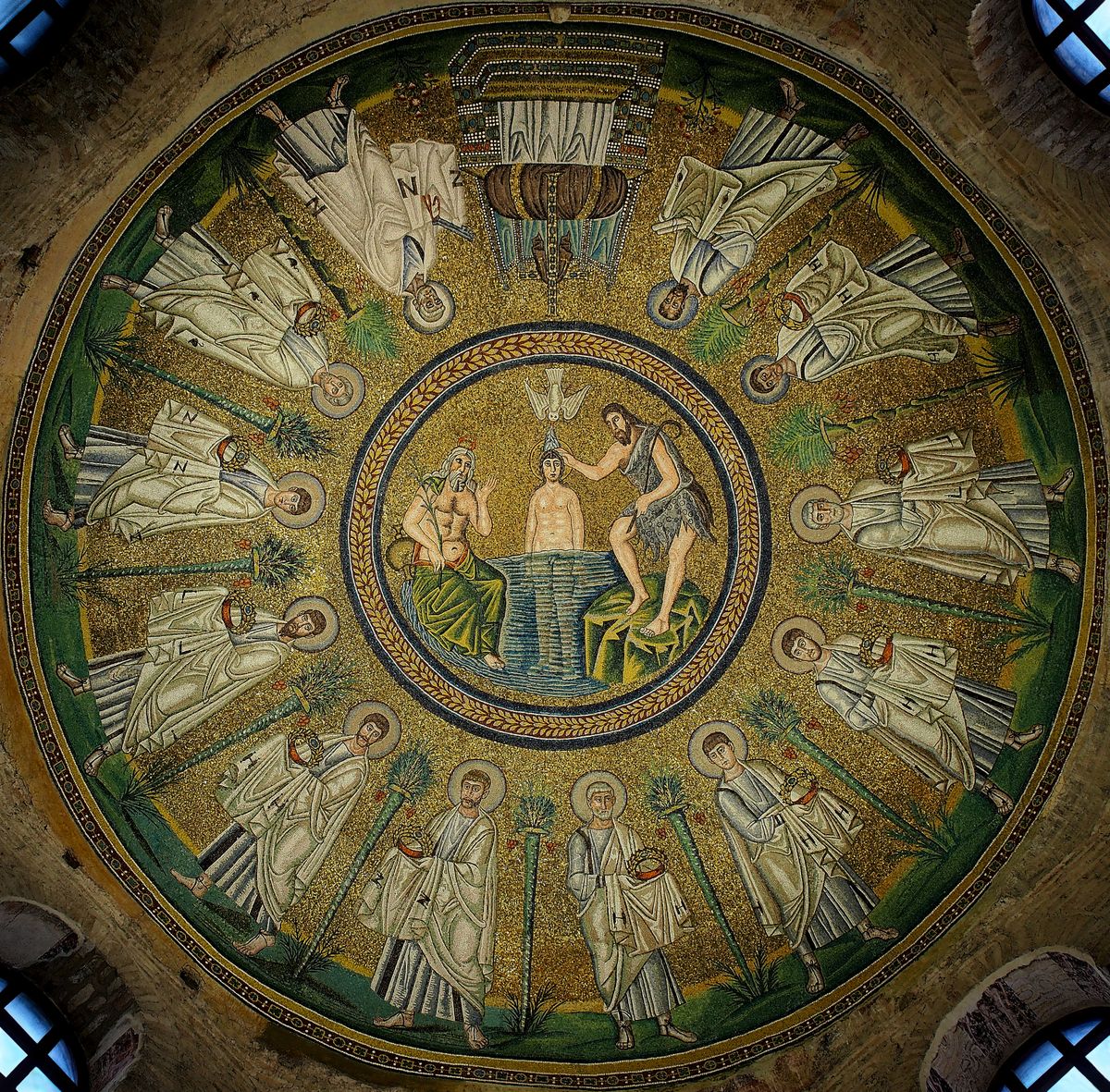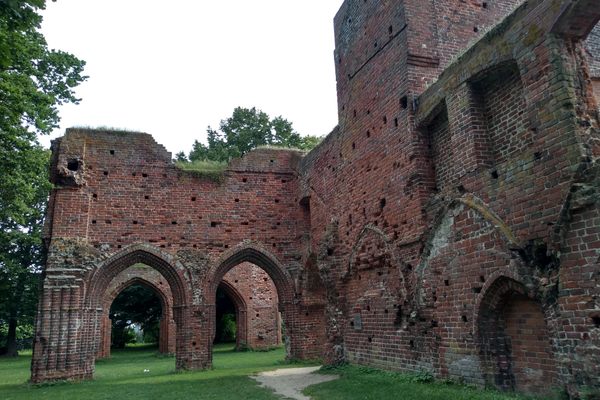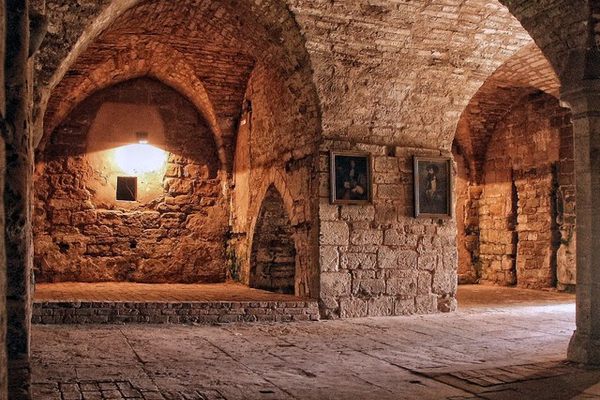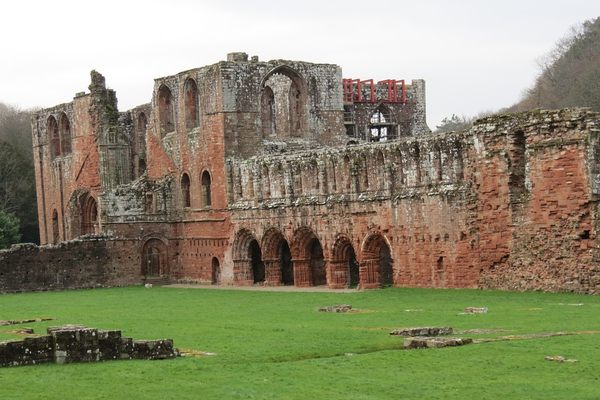About
The Arian Baptistry is a rare relic of the short period in the late fifth and early sixth centuries when Gothic kings ruled Italy from Ravenna.
Built by King Theodoric the Great as his royal baptistry, the octagonal structure depicts, in gold mosaic, the baptism of Christ surrounded by the apostles and an enthroned cross. To the left of Jesus sits a bearded figure with a crab on his head, a pagan-influenced representation of the River Jordan.
The Goths practiced Arianism, a form of nontrinitarian Christianity originating in Egypt that believed Christ was created by God the Father; there he was inferior and not, as the Nicene Creed states, "of one substance" with the Father.
However, you'd be hard-pressed to see exactly why the baptistry belonged to this heretical sect of Christianity. It resembles and was likely modeled on the orthodox Baptistry of Neon a few blocks away. The distinguishing clue is its unusual depiction of Jesus as young and beardless, an indication of the emphasis of the inferior status of the Christ the Son to God the Father.
After the Eastern Roman Empire retook Italy in the 540s, the baptistry was reconsecrated as orthodox, and a monastery was built to attach it. The colorful frescoes and decorations that would have lined the walls have long since been destroyed. The Allied bombardment of Ravenna in World War II destroyed the structures surrounding the baptistry and exposed its original exterior for the first time in centuries.
Related Tags
Flavors of Italy: Roman Carbonara, Florentine Steak & Venetian Cocktails
Savor local cuisine across Rome, Florence & Venice.
Book NowPublished
July 10, 2019































